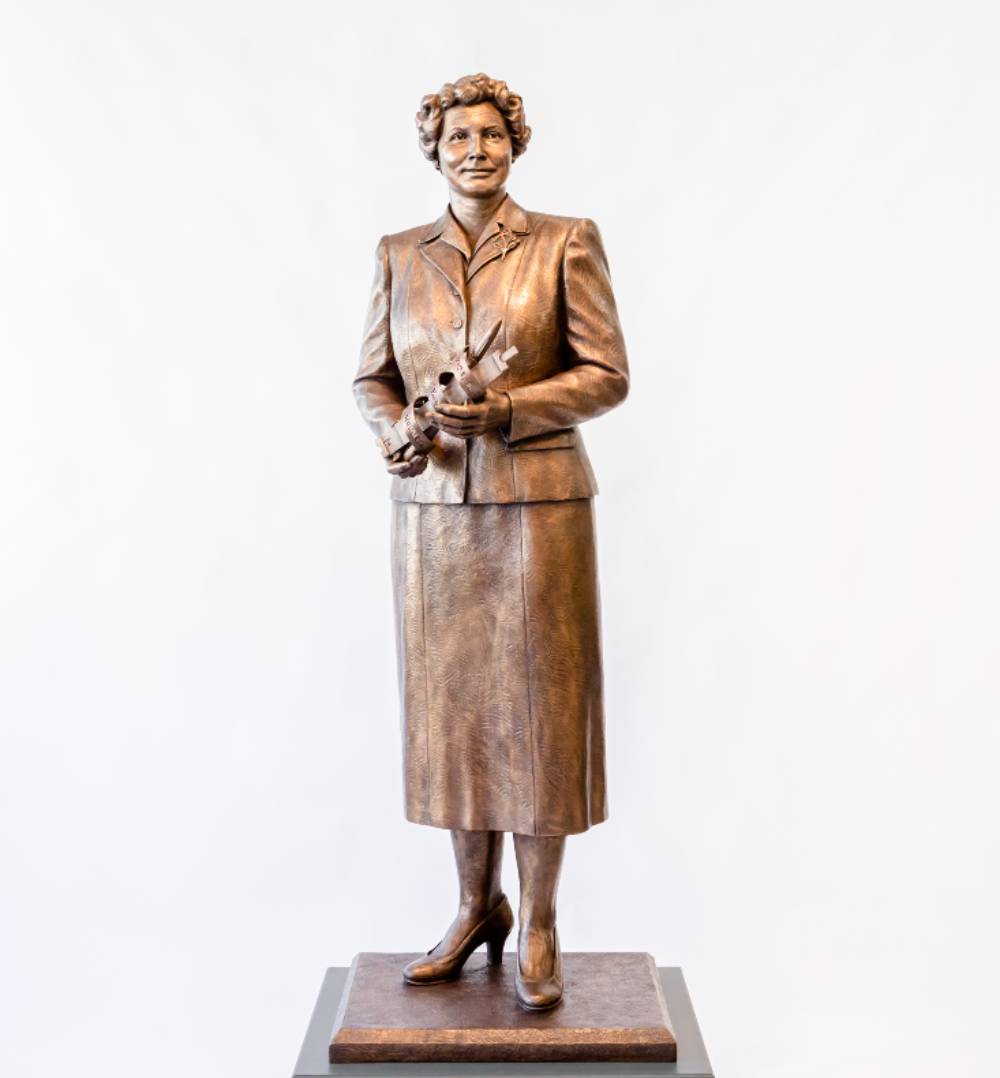
- Details
- By Jenna Kunze
Visitors to the recently opened First Americans Museum in Oklahoma City will soon be greeted by a bronze statue of one of Indian Country's leading female rocket scientists: Mary Golda Ross of the Cherokee Nation.
Born in 1908, Golda Ross contributed to contemporary studies of orbiting satellites, crewed Earth-orbit flights, and created preliminary designs for flyby missions to Mars and Venus. She worked as one of 40 engineers dedicated to an American aerospace manufacturer’s top secret think tank at Lockheed Aircraft Corporation. After retiring, Golda Ross dedicated herself to encouraging Indigenous youth—particularly women—to pursue the fields of science, technology, engineering, and mathematics (STEM). She passed on at the age of 99 in 2008.
In 2019, Golda Ross was selected to appear on a special edition of a $1 U.S. coin. Now, the First American Museum is following suit with the slated installation of her statue on Feb. 22, a spokesperson from the museum told Native News Online.
Want more Native News? Get the free daily newsletter today.
“Mary Golda Ross is an inspiration to all young women and to the First Americans community for her contributions to the aerospace industry as the first woman engineer of Lockheed,” James Pepper Henry (Kaw Nation), director of the First Americans Museum said in a statement to Native News Online. “As a member of the Cherokee Nation, one of the 39 tribal nations in Oklahoma, we honor her for her many accomplishments.”
As part of its campaign to uplift womens’ contributions to the field of STEM, the international cosmetic brand Olay is donating $1 million to memorializing, celebrating, and fostering women in STEM. Part of that funding has paid for the Golda Ross statue. Olay also partnered with the Smithsonian’s National Air and Space Museum to ensure the statue, along with its plaque, is historically accurate.
According to one research center, women make up just 28% of the workforce in science, technology, engineering, and math.
Olay’s announcement was timed to draw attention to the United Nations International Day of Women and Girls in STEM later this week. The United Nations General Assembly declared February 11 International Day of Women and Girls in Science in 2015 as a way to encourage women and girls’ full and equal access to and participation in science.
More Stories Like This
Native News Weekly (August 25, 2024): D.C. BriefsUS Presidents in Their Own Words Concerning American Indians
NDAA passes House; Lumbee Fairness Act Advances
NFL, Vikings to Host Native All-American Game, Youth Flag Clinic
Senate Committee on Indian Affairs Passes 12 Bills to Strengthen Tribal Communities
Help us defend tribal sovereignty.
At Native News Online, our mission is rooted in telling the stories that strengthen sovereignty and uplift Indigenous voices — not just at year’s end, but every single day.
Because of your generosity last year, we were able to keep our reporters on the ground in tribal communities, at national gatherings and in the halls of Congress — covering the issues that matter most to Indian Country: sovereignty, culture, education, health and economic opportunity.
That support sustained us through a tough year in 2025. Now, as we look to the year ahead, we need your help right now to ensure warrior journalism remains strong — reporting that defends tribal sovereignty, amplifies Native truth, and holds power accountable.
 The stakes couldn't be higher. Your support keeps Native voices heard, Native stories told and Native sovereignty defended.
The stakes couldn't be higher. Your support keeps Native voices heard, Native stories told and Native sovereignty defended.
Stand with Warrior Journalism today.
Levi Rickert (Potawatomi), Editor & Publisher

